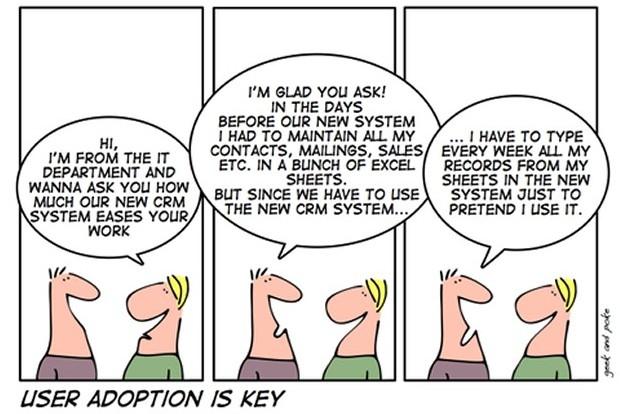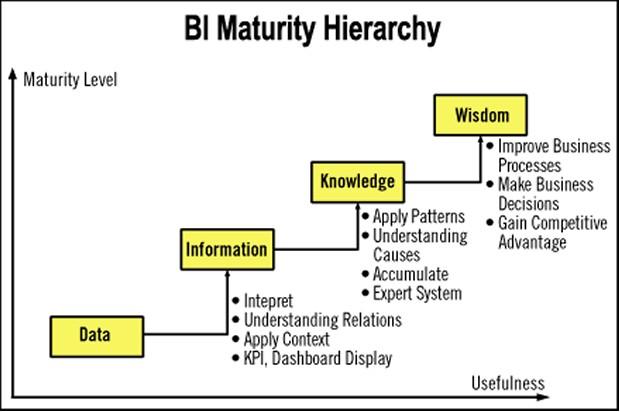3 use cases for embedded BI
Much like the ongoing race for the White House – check out our 2012 US presidential election blog – chatter about embedded Business Intelligence (BI) seems inescapable.

Software vendors and organizations from across almost all major industries are beginning to embed analytical capabilities in their core applications and processes.
A recent article published by Information Management, Make BI More Pervasive with Embedded Analytics, highlighted the role integrated analytics was playing in driving pervasive BI deployments, and freeing decision management technology from the confines of upper management:
“In contrast, for the last few years we have witnessed increasing numbers of people within an organization making decisions at the operational levels, be it logistics operations on the ground, customer care center representatives interacting and resolving critical customer queries and complaints, or bank representatives at the branch opening accounts and cross-selling insurance and other loan policies to customers, or marketing teams doing promotional campaigns and providing customer offers on the spot.”
What do you mean, everyone?
While it’s pretty easy to pronounce that ‘everyone’ is leaping at the chance to enhance and compliment core product capabilities with reporting and analytics functionality, this all-encompassing term is vague, and fairly unhelpful.
So here are three, out of many, potential use cases for embedded BI:
1. Logistics and supply chain management
Most organizations working within the logistics and supply chain management industries already use GPS technology to track the location of stock and transportation vessels / vehicles. Integrating analytics capabilities enables that location-based information to be layered with other relevant data to enhance operational efficiencies relating to:
- Marketing and sales
- Financial management
- Human resources
- Transportation management
- Corporate management
- Warehouse management
- Value added services
Adding BI capabilities allows those in the logistics industry to:
- Optimize transportation routes
- Fairly and effectively analyze driver and carrier performance
- Develop third-party carrier relationship management techniques
- Reduce cycle times by cross referencing warehouse stock with sales orders, shipment delays and capacity to execute
- Improve capacity planning, manpower allocation and supply chain visibility (ensure that the number of transportation vehicles and personnel available match the number of finished products and orders placed, to eliminate inefficiencies)
- Provide better customer service and responsiveness
- Understand and leverage customer profitability
2. Customer service and sales
Many call centers have integrated analytics competencies into their call tracking software. Embedded BI, in this scenario, enables employees to visualize the purchasing and product / service usage behaviors of the customer they’re currently speaking to, enabling them to identify optimum cross or up-sell opportunities.
3. Human resources
The ability for integrated BI technology to collate data from multiple sources is particularly pertinent for organizations or departments dealing with Human Resources (HR) issues and information.
Combing analytics with HR management software and techniques could enable:
- Reliable workforce planning and talent management by combining current employee data with turnover rates to establish effective, efficient and timely talent acquisition processes and learning and development programs
- Strategic alignment to ensure all business activities and departmental objectives are in line with strategic organizational goals
- The optimization of employee recruitment and retention objectives by analyzing and comparing the efficiencies of recruitment processes with recruiting software along with employee attributes/skill sets and drivers leading to employee voluntary departure.
- Workforce performance measurement and benchmarking to identify departments, functions or individuals in need of improvement
How to make embedded analytics a reality
In our previous posts on embedded BI – 8 reasons why embedded Business Intelligence beats DIY and Benefits of embedded Business Intelligence – we’ve analyzed the pros and cons of the build vs buy argument.
Without reiterating all the pros and cons of the various options for acquiring integrated BI functionality, the Numerical Algorithms Group (NAG) summarized the ultimate advantages of purchasing a readymade BI solution in its Three Options for Embedded Analytics white paper, stating that:
“By embedding analytic functionality into their applications, software vendors can help their customers and users to extract new insights from their data, solve business problems and make informed decisions. Whilst building in-house solutions could be viewed as diverting resources from core application development, and borrowing from open source distributions raises issues of quality, using a commercial option provides an optimum solution for many vendors because of the way it leverages the supplier’s experience in developing, testing, documenting and supporting analytical algorithms. Vendors who incorporate commercial analytics into their applications free up their developers to concentrate on adding domain-specific value, whilst the analytical heavy lifting is being performed by someone else who can be relied upon to provide a more dependable solution than that offered by open source.”
NAG divided methods for embedding analytics into core software applications into three separate approaches:
- Build and integrate in-house:
- Pro: Analytic functionality is owned by the integrating vendor
- Con: Requires significant investment of resources and time to develop, test, support and maintain analytic functionality; whilst simultaneously diverting development efforts from the core application
- Borrow from open source analytics:
- Pro: No licensing costs, and less in-house development required
- Con: Third-party obligations and viral-type license agreements may be unacceptable to customers; while documentation, testing and support are variable
- Buy from commercial suppliers:
- Pro:
- Quality, consistency and contemporary nature of software
- Depth and breadth of analytical functionality
- Reduced in-house development time and risk through use of tested, supported and widely used analytics functionality
- Leveraging of analytics-specific expertise
- Development team are able to concentrate on developing and supporting its core application
- Con: Cost to license
- Pro:
Common delivery pitfall for embedded BI
No matter how, why or in which business applications or processes BI functionality is embedded, common pitfalls abound.
In an insightful interview (Best Integration Practices for Better BI) with ITBusinessEdge’s Loraine Lawson, principal for Deloitte’s Advanced Analytics and Modeling Sector, John Lucker, emphasized data governance and intuitive technologies as the two crucial project and product related stumbling blocks encountered by organizations attempting to implement and leverage embedded BI:
- Data governance: “That is a huge issue, and some type of quality control over reports should be the part of any governance. Every business needs to have not just technical data governance and IT governance, but they need to have a business information or analytics governance process as well. I think there needs to be a governance process to make sure that before a decision is made using some of those ad-hoc pieces of information, that the data has been checked and validated in some way.”
- Intuitive BI solution: “I would say a lot more time is spent on the technical nuances, delivery mechanisms and tool availability, and not enough on, ‘So how are we going to help our business users ask the really tough, vexing questions.’ And, ‘Is the tool really intuitively usable to people who don’t have degrees in computer science?’”
Where to next?
While it’s obvious that the use of embedded reporting and analytics technology – to improve the effectiveness and efficiency of processes and operations throughout the enterprise – is growing, it remains far from mature.
According to VP of Research at global analyst firm Gartner, Nigel Rayner, most of today’s BI functionality is utilized by analysts and managers to perform queries. He suggests that only a small proportion of analytical functionality is embedded at the “point of decision” (such as when workers in a telecommunications call center are prompted to offer a caller additional products or services based on their purchase and payment histories), or in existing processes.
"Today, 80 percent of embedded BI and analytics use is for inquiries, while 15 percent is for the point of decision and only five percent are embedded into processes," said Rayner. "In five to 10 years, 60 percent will be in inquiry-based, 30 percent in point of decision and maybe 10 percent in processes."






